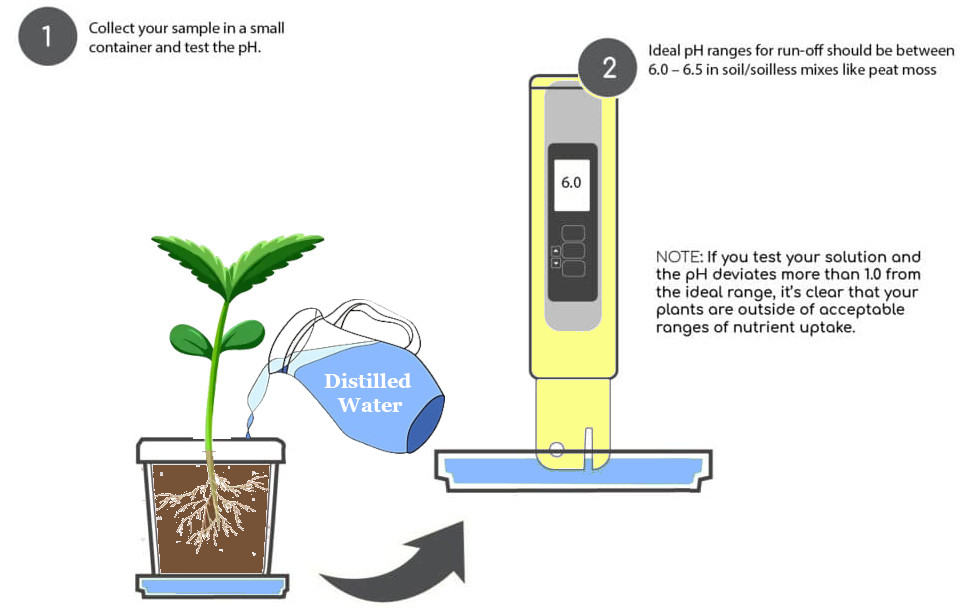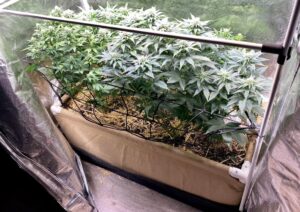Nutrient lockout occurs when plants are unable to absorb the nutrients they need to thrive and grow, even when those nutrients are present in the growing medium. This issue is often caused by a pH imbalance in the soil or growing medium. In this article, we will explore the causes of nutrient lockout, its symptoms, and most importantly, how to prevent and treat it effectively.
What is Nutrient Lockout and Why Does it Happen?
Nutrient lockout is a condition in which cannabis plants are unable to absorb essential nutrients from the soil or growing medium. It occurs when the pH level of the medium is outside the optimal range for nutrient uptake. pH is a measure of the acidity or alkalinity of a substance, and for cannabis, the ideal pH range is between 5.5 and 6.5 in hydroponic systems and 6.0 to 6.8 in soil systems.
When the pH level is too high or too low, certain nutrients become less available to the plants. This can lead to deficiencies and stunted growth, even if the nutrients are present in the soil. Nutrient lockout can be caused by a variety of factors, including incorrect pH levels, over-fertilization, and the presence of certain minerals or contaminants in the growing medium.

Signs of Nutrient Lockout in Cannabis
Identifying the signs of nutrient lockout is crucial for effective treatment. Some common symptoms include:
- Stunted Growth: Nutrient lockout can cause plants to stop growing or grow at a significantly slower rate than normal.
- Yellowing Leaves: The lower leaves of the plant may turn yellow, indicating a lack of chlorophyll and nutrient deficiency.
- Leaf Discoloration: Nutrient lockout can cause leaves to develop unusual colors, such as brown, purple, or red.
- Leaf Curling: Leaves may curl upwards or downwards, a sign of nutrient imbalance and stress.
- Burnt Leaf Tips: The tips of the leaves may appear burnt or brown, indicating a nutrient imbalance.
- pH Imbalance: Nutrient lockout often coincides with a pH imbalance in the growing medium.

How to Treat Nutrient Lockout in Cannabis
If you suspect nutrient lockout in your cannabis plants, there are several steps you can take to address the issue:
Step 1. Adjust pH Levels
The first step in treating nutrient lockout is to adjust the pH levels of the growing medium. Test the pH using a pH tester and determine whether it is too high or too low. If the pH is outside the optimal range, you can use pH up or pH down products to bring it back into the desired range. Alternatively, natural remedies such as lemon or vinegar for decreasing pH, and baking soda for increasing pH, can be used in small quantities. Make sure to test the pH after each application and adjust as needed.

Step 2. Flush the Growing Medium if more than 1.0 out of optimal pH Range
Flushing the growing medium can help remove excess salts or built-up nutrients that may be contributing to nutrient lockout. Withhold nutrients and flush the medium with pH-balanced water to remove any accumulated salts. This process should be done for several days before testing the pH and resuming normal feeding. Be sure to place a fan blowing directly on the soil surface to speed up the flushing process and prevent water logging.

3. Apply Foliar Feeds to immediately address the nutrient lockout deficiency
Foliar feeding involves spraying nutrient solutions directly onto the leaves of the plants. This bypasses the root system and allows for quicker nutrient absorption. Foliar feeds can be especially useful in treating nutrient lockout, as they provide an alternative route for nutrient uptake.

Step 4. Refine Your Feeding Schedule
Overfeeding can contribute to nutrient lockout, so it’s important to have a consistent feeding schedule. Keep a journal of when and how much you feed your plants, and adjust as needed. If you suspect nutrient lockout, reduce the frequency of feeding and provide pH-adjusted water alongside nutrients.
How to Prevent Nutrient Lockout in Cannabis
Preventing nutrient lockout is crucial for maintaining healthy and thriving cannabis plants. Here are some strategies to help prevent nutrient lockout:
Test Soil and Water pH
Regularly test the pH of both the soil and water to ensure they are within the optimal range. Adjust pH as necessary using appropriate products or natural remedies.
Use High-Quality Nutrients
Invest in high-quality nutrients that are specifically formulated for cannabis cultivation. These products are often designed to provide the ideal nutrient ratio for each growth stage and are less likely to cause nutrient lockout.
Feed Consistently
Stick to a consistent feeding schedule and avoid overfeeding. Keep a journal to track feeding frequency and nutrient quantities to prevent nutrient imbalances.
Cultivate Living Soil
Promote the growth of beneficial microorganisms in the soil by using organic amendments and incorporating mulches. These microorganisms help improve nutrient availability and reduce the risk of nutrient lockout.

Recipe for Homemade Living Soil
| Ingredient | 50-Liter Batch | 100-Liter Batch | 200-Liter Batch |
|---|---|---|---|
| Base Soil | 1 bag (50 liters) | 2 bags (100 liters) | 4 bags (200 liters) |
| Coco Coir or Peat Moss | 12.5 liters | 25 liters | 50 liters |
| Perlite or Vermiculite | 6.25 liters | 12.5 liters | 25 liters |
| Well-Aged Compost | 3.125 liters | 6.25 liters | 12.5 liters |
| Worm Castings | 3.125 liters | 6.25 liters | 12.5 liters |
| Bat Guano or Seabird Guano | 3.125 liters | 6.25 liters | 12.5 liters |
| Fish Meal | 3.125 liters | 6.25 liters | 12.5 liters |
| Kelp Meal | 6.25 liters | 12.5 liters | 25 liters |
| Bone Meal | 6.25 liters | 12.5 liters | 25 liters |
| Azomite or Rock Dust | 1-2 liters | 2-4 liters | 4-8 liters |
| Mycorrhizal Fungi | 1-2 cups | 2-4 cups | 4-8 cups |
| Beneficial Bacteria | Per product instructions | Per product instructions | Per product instructions |
Instructions:
- Mixing: Open the bag of organic potting soil and transfer it to a large container or tarp spread out on the ground. Add the specified volume of each amendment, such as Azomite or glacial rock dust, and thoroughly mix until achieving a uniform consistency.
- Minerals: Incorporate the recommended amount of Azomite or glacial rock dust into the mix to provide essential trace minerals.
- Microbial Inoculants: Add mycorrhizal fungi to establish a beneficial relationship with plant roots, aiding in nutrient uptake. Additionally, include a beneficial bacteria supplement following the product instructions to promote a thriving microbial community in the soil.
- Moistening: Gradually moisten the soil mix with water until it reaches a good, crumbly texture, ensuring not to over-saturate it.
- Curing: Allow the soil mix to “cook” or cure for a few weeks before using it for your cannabis plants. This period allows microbial life to establish and nutrients to become more bioavailable.
This recipe is designed for amending 50-liter bags of organic potting soil but can be adjusted based on the specific needs of your cannabis plants and personal preferences.
Monitor Plant Health
Regularly monitor your plants for signs of nutrient deficiency or lockout. If you notice any symptoms, test the pH and adjust as necessary before nutrient deficiencies occur.
By following these preventative measures, you can reduce the risk of nutrient lockout and ensure your cannabis plants receive the nutrients they need for optimal growth and development.
Nutrient Lockout: Will Cannabis Plants Recover?
The good news is that cannabis plants can recover from nutrient lockout with the right treatment and care. The recovery time will vary depending on the severity of the lockout and how quickly the issue is addressed. Catching the signs early, flushing your grow medium and adjusting the pH of the growing medium will reduce the recovery time. Even if the lockout has progressed, plants can bounce back within a couple of weeks with proper treatment.
During the recovery period, it’s important to continue pH-balancing the water and providing foliar feeds to support nutrient uptake. Remove any foliage that is unlikely to recover to redirect resources to healthier leaves.
By following the recommended treatment methods and maintaining proper pH levels, you can help your cannabis plants recover from nutrient lockout and continue to thrive.

